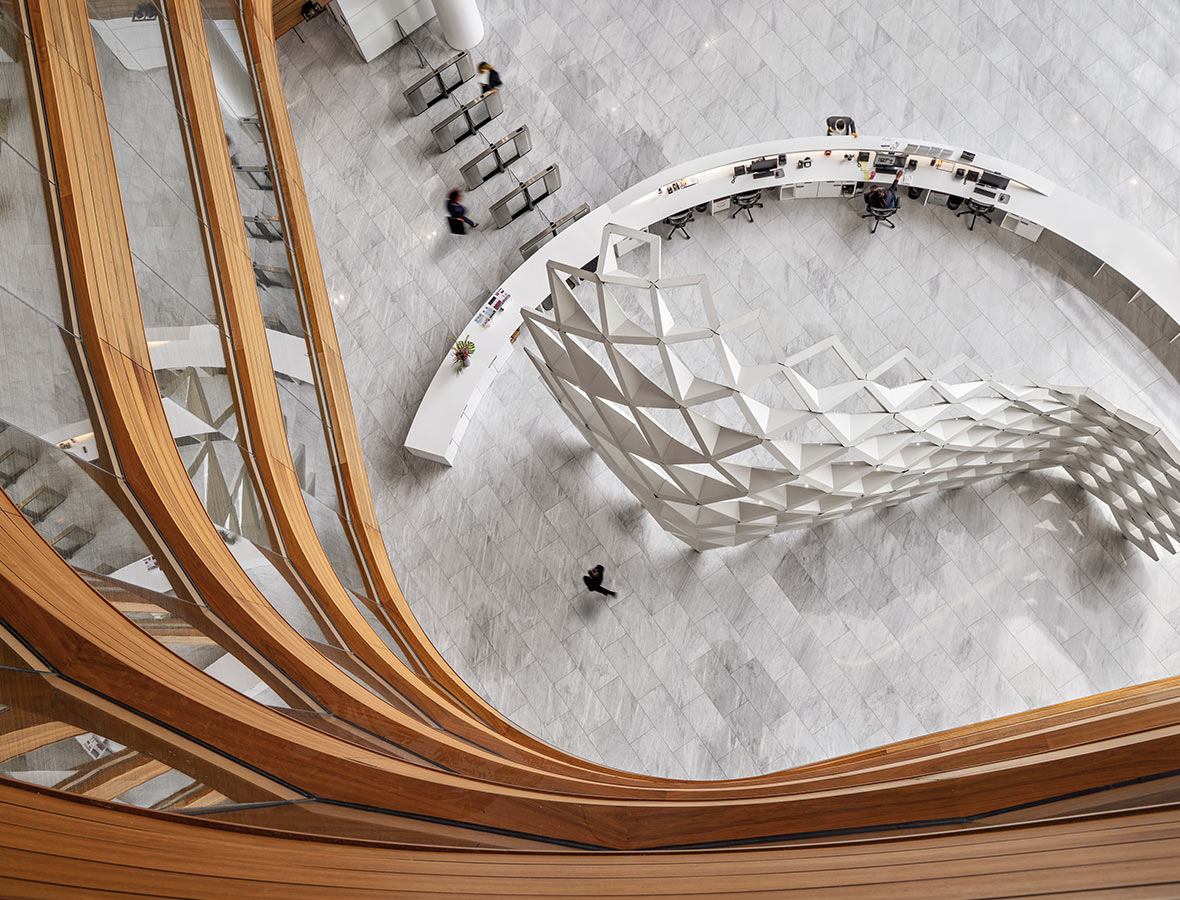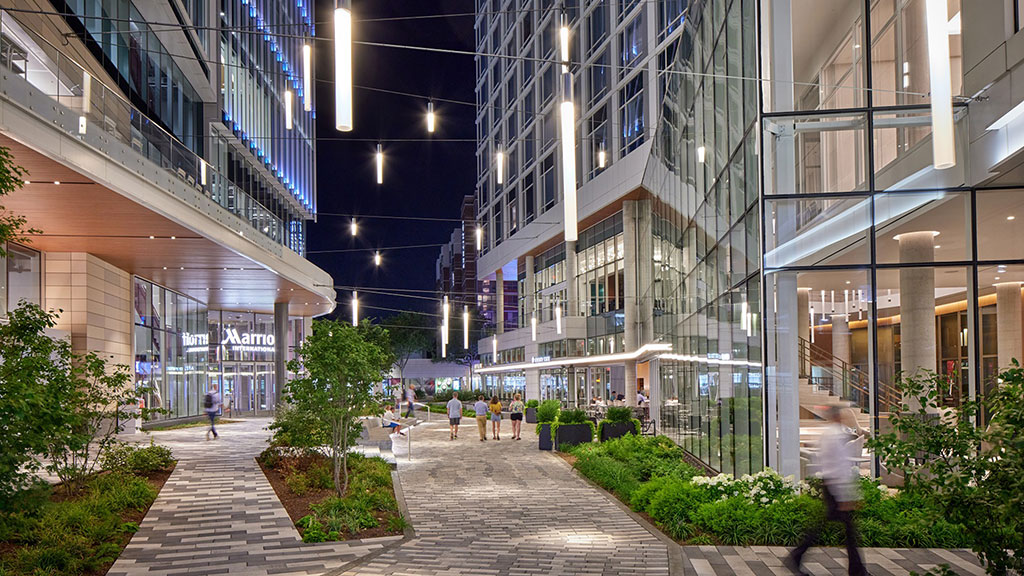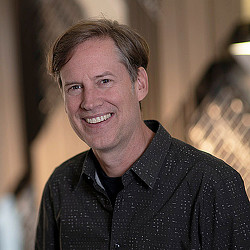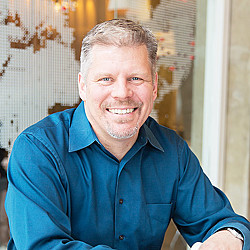Trends to Watch: How Developers Can Make Buildings More Adaptable, Relevant, and Resilient
December 01, 2023 | Q&A with Darrel Fullbright and Duncan Lyons
Editor’s Note: This blog is part of our Design Forecast blog series, looking at what’s next in 2024 and beyond. Here, we sit down with Darrel Fullbright and Duncan Lyons, global leaders of Gensler’s Office Developers practice, to discuss what’s next for the future of office buildings.
The industry is grappling with how to adapt office buildings to changing work patterns and demands while also making them more sustainable and resilient for the long term. How can developers make their buildings more relevant in a time when fewer office workers are coming downtown?
Duncan Lyons: We’re trying to activate the ground plane in cities that used to be alive with office workers and are now challenged by office workers not coming in. A lot of this has to do with how your building can be relevant and become a part of this larger community. So, that means a ground floor program that is not just useful for office tenants, but is actually contributing to the surrounding community, providing things that are useful to them, being a good neighbor, and optimizing the 20-minute city.
If you can create mixed-use programs as part of these developments and bring in residential as well as office, then you’re not as dependent on those office workers who may or may not be there all the time. And you’re providing opportunities for people who live in the neighborhood. In the case of the new Marriott International Global Headquarters in Bethesda, Maryland, there is the office building and also a hotel. Both programs open up at the ground floor to a central plaza and pedestrian street, so that both buildings are activating those public spaces and contributing to the nature of the community around them.
Darrel Fullbright: We designed a mixed-use government project in Costa Rica that’s doing the same thing. Rather than being a walled off government complex, it’s engaging with the urban streetscape. There’s also a vertical mixed-use project in Toronto that has office and residential with a shared amenity floor between the two that brings the users together between those two programs.

How are office building developers embracing sustainable design and decarbonization?
Darrel: We’ve tried to demystify the idea of decarbonization by outlining some basic steps for developers to make the path to net zero energy more possible. You start with climate, reduce the load first, decarbonize building systems, minimize embodied carbon, and utilize renewable energy sources. People look at net zero as big, complicated thing, but if you start with these steps, then you can start to make an impact.
Duncan: We’re also looking at the idea that passive strategies can be equally impactful as active strategies. For example, we have a project in Portugal that uses a façade of hollow tubes to exhaust hot air from the building. They also help cool the building by shading the windows. Or there’s a new headquarters project that we did in Wuhan, China that has automated sun shading solutions. So those are projects that really start to show how you make a big impact on operational carbon. Another big trend is that everything is going all-electric, because when you can decarbonize the grid, which is increasingly being mandated by governments, then your building is automatically decarbonized.
Darrel: We’ve started to think about repositioning assets up front when we’re designing new buildings, because we know that buildings need to have longer lifespans. They may start off as an office building, but then they may need to become something else. And so, we started looking at them as a “perpetual asset” — this idea of creating more adaptable buildings that could morph and change to new uses throughout their extended lifespan. If we don’t have a central core fixed in place by the structure, then it’s easier to change those cores for different uses, such as residential. And so, rather than designing buildings that are difficult to reposition and carbon intensive, we want to design buildings that are easier to reposition down the road. That’s going to give them increased long-term value.
The other idea is this notion of having people being more integral at the heart of our projects. We’re doing a lot of flexible buildings that can convert to science and lab space, for example. And this idea is that you can set up half the building to be more hermetically sealed lab space and half the building to be more permeable indoor-outdoor office space.
Can you talk about the “flight to experience” — why is this a growing trend?
Duncan: For years, people have talked about flight to quality, where Class A and trophy buildings in the very best locations have been highly sought after. But it’s really about the experience that the building delivers to tenants, more than just the quality of the design.
People would go into the office more if it had all the things they needed, right? And so, what are those things that really deliver the experience? It’s not just about the building amenities but also creating places where you’re part of a community, and it doesn’t feel like you’re in a single-use district.
Darrel: When it comes to the flight to experience, it’s about that mixing of uses inside the building, probably more than anything else. It’s about having a mix of retail, dining, and other things to do in an office building versus a single-use building.
How is the idea of urbanizing the suburbs becoming a growing trend?
Darrel: I think that the number one impediment to coming back to the office, frankly, is people’s commutes. Suburban communities that have mixed-use attributes are becoming very popular because of lengthy commutes. If people don’t get on mass transit, or they don’t want to come to urban centers, an amenitized, mixed-use suburban ring city becomes very interesting. Once you get there, you can walk and do everything there.
Duncan: Marriott just opened its new headquarters in Bethesda, Maryland, which is a thriving inner suburb of Washington, D.C., and companies continue to want to move there. It’s suburban but has an urban character. You forget you’re in the suburbs when you’re there.
The buildings that are best located are near mass transit, so the most amount of people can get there easily. The quality of the location is going to make the building more resilient in the future.
For media inquiries, email .


